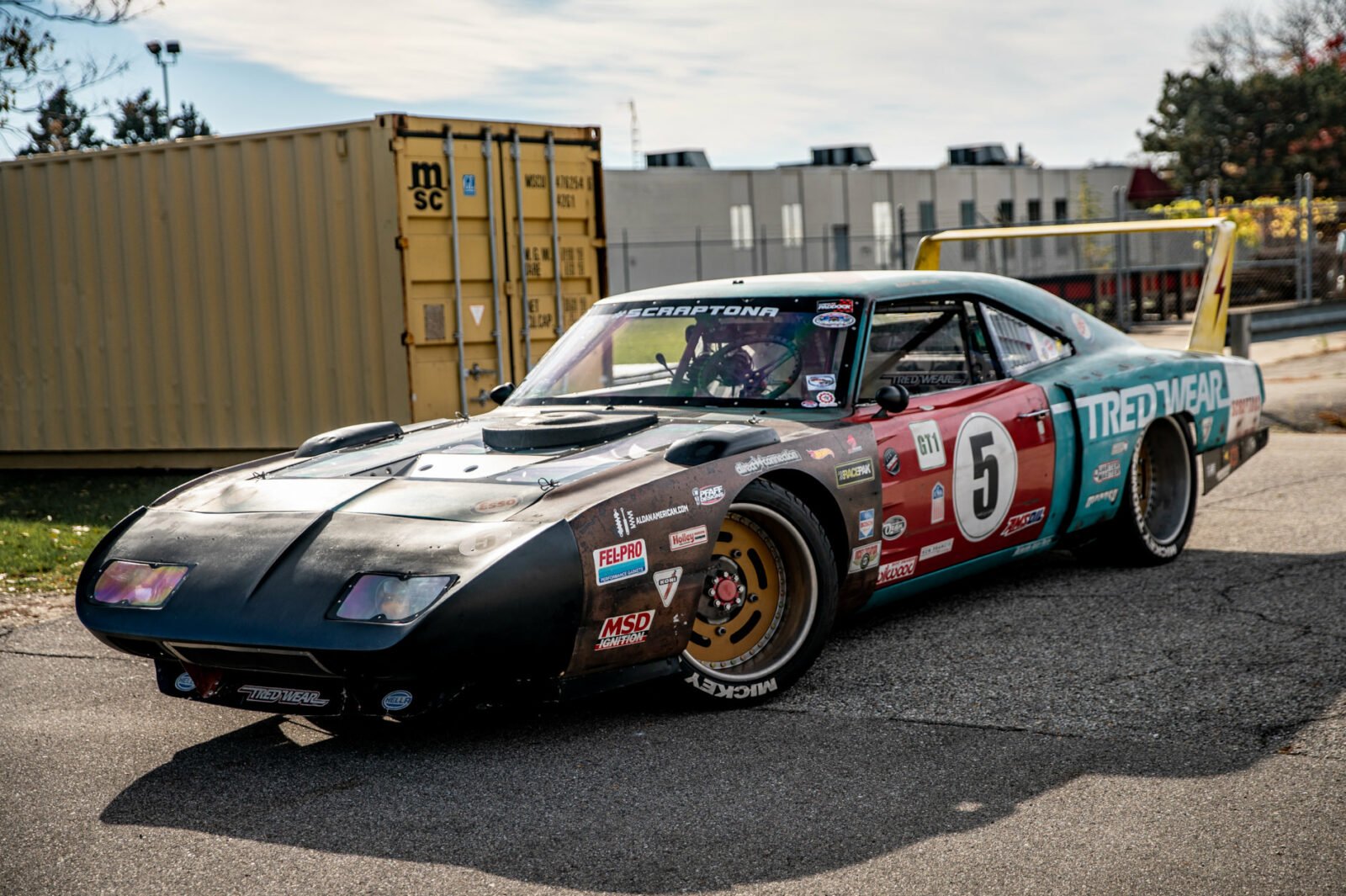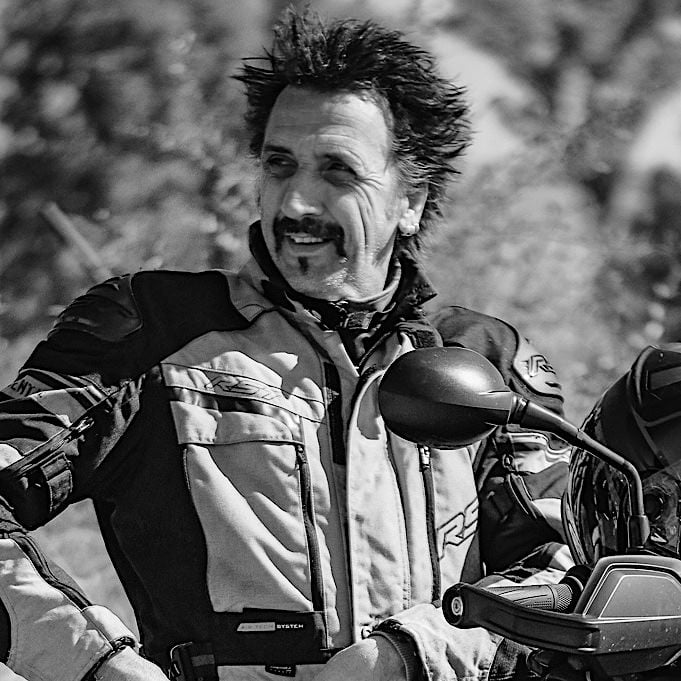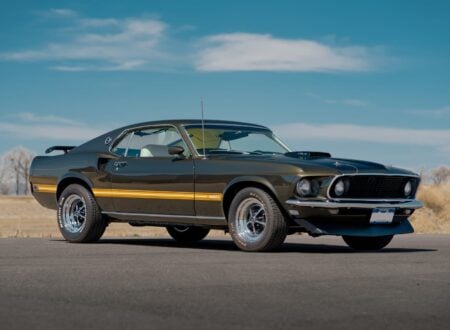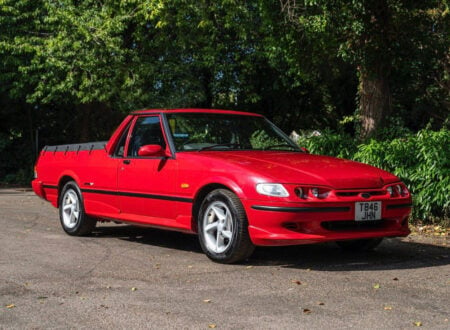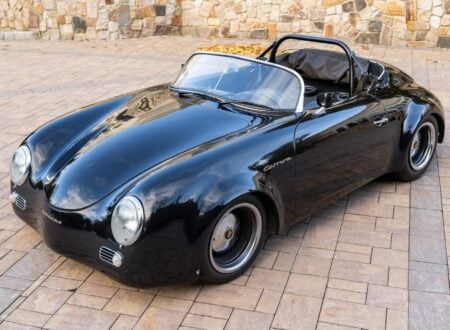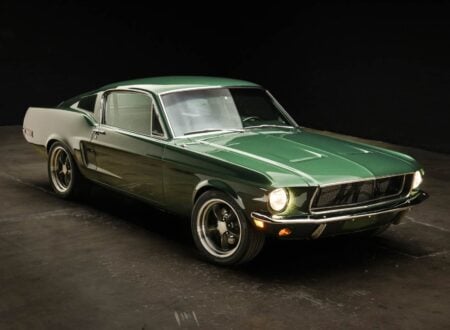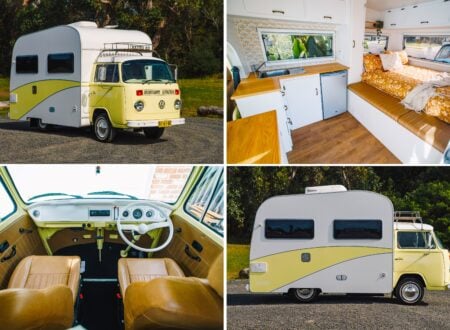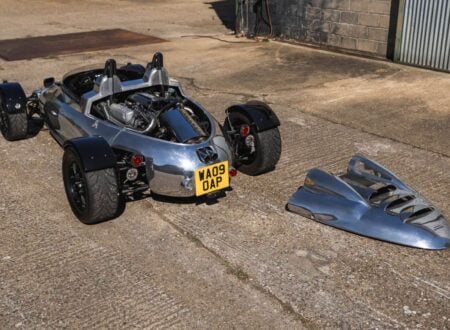This article was written by Silodrome contributor Harry Fisher.
What would you give to have an original Dodge Charger Daytona or Plymouth Superbird in your garage? Put it another way – what would you have to pay to have one in your garage? And, mind you, we’re talking about one of the street Daytonas and ‘Birds that were built for homologation purposes.
Now ask yourself, what would you give to have a genuine NASCAR Daytona or Superbird, one with racing history? We’re talking telephone numbers here!
Fast Facts – The Dodge Charger “Scraptona”
- The Dodge Charger “Scraptona” started life as a regular 1969 Dodge Charger shell that had been left out in the Alabama weeds after having many of its components removed and used on other cars.
- The future looked bleak for the Charger, just another rusting hulk in an American field, until it was picked up by the team at TredWear and given a whole new lease on life.
- The rebuild was a little more ambitious than most. The car had long since lost its matching-numbers engine and so a concours restoration wasn’t an option. Instead they decided to turn it into an outlaw Daytona nicknamed the “Scraptona.”
- The car now has a tubular steel chassis and roll cage with the body panels over the top, it has the same long nose and high wing of the originals, and it’s powered by a 358 cubic inch Dodge R5-P7 V8 NASCAR engine making 740 bhp.
The Daytona And The Superbird
The problem with the road-going Daytonas and Superbirds is that they look a bit gormless with their skinny road wheels and raised ride height: it was the NASCAR racers that just looked so cool, hunkering down onto the pavement with hubcapless and painted rims, not to mention the sponsor-defined colour schemes.
So, if we accept that an original is out of reach, then what’s the alternative? Well, how about this: the Dodge Charger “Scraptona!”
Hang on, the what?
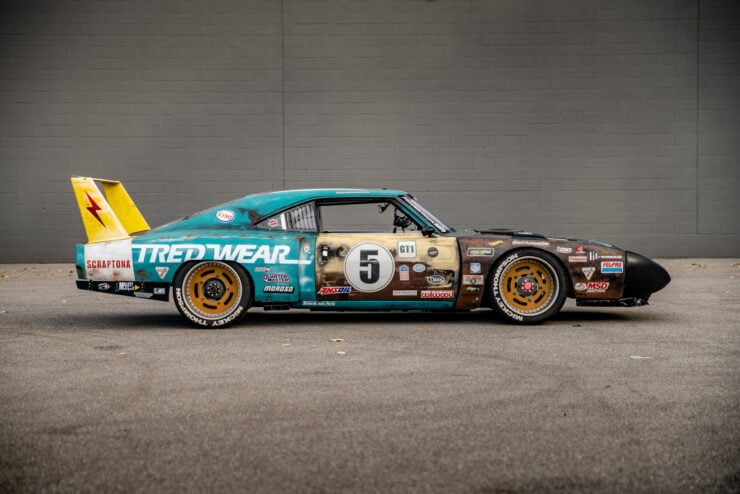

The history of racing is littered with iconic car designs, from the 250F Maserati and the front-engined Indianapolis roadsters of the 1950s, from the diminutive rear-engined Cooper to the Lotus 78 and 79 ground effect Formula one cars, from the monstrous McLaren Can Am cars to the Group B rally cars of the 1980s.
But in the history of American racing, is there any series of race cars that are as distinctive or as controversial as the Dodge Charger Daytona and the Plymouth Superbird?
The NASCAR Aero Wars
The NASCAR aero wars, as they are now referred to, have their origins in the 1968 season of NASCAR racing, when the Ford Motor Company virtually swept the board in the early races. The Dodges and Plymouths were aerodynamic bricks compared to the Mercurys and Fords and that didn’t sit well with Chryco’s top brass.
What made things worse was the defection of “King” Richard Petty to Ford for 1969 when Chryco failed to give him a car worthy of his talents.
The first shot fired by Chryco was the 1969 Charger 500 which attempted to address the problems of the Charger, which was huge amounts of lift generated by the recessed grille and buttressed rear fastback design. The “500” label signified the number that would have to be built to homologate it for racing, although most people now agree that nowhere near that number were actually built.
It wasn’t enough and Chryco’s designers went back to the drawing board. The solution was as radical as it was inventive – an extended beak for the nose and a full width wing mounted high up in the airstream at the rear, designed to not only penetrate the air but to also counter aerodynamic lift and provide positive downforce. They were designed to work best on the ultra-fast super speedways, such as Daytona and Talladega.
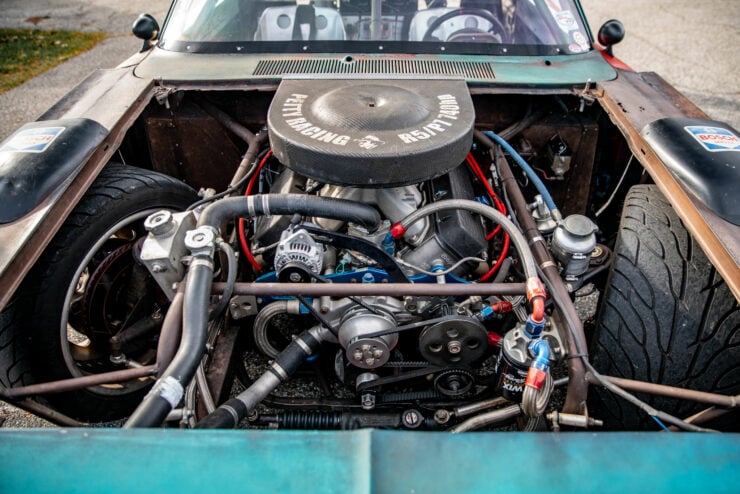

How many original NASCAR Daytonas and Superbirds survived? No-one really knows for sure. After all, there’s nothing so outdated as last year’s race car, especially if it was illegal the next season, and let’s not forget – they led hard lives.
Which makes it all but impossible that you’d be able to get your hands on an original Daytona or Superbird. But, what if there was an alternative? The word “replica” has an unhappy association in the world of cars but “recreation” is much less offensive.
Which is why, when this Daytona Scraptona appeared on Garage Kept Motor’s website, there was naturally a flurry of excitement. It’s not a genuine aero car but there is more than enough about it to get the juices flowing.
Perhaps the best thing about the car is its less-than-perfect condition, this really could be a car driven by Bobby Isaacs in 1970 and then forgotten in some speedway garage.
The car started life as a genuine 1969 Dodge Charger shell, which had been left outside in an Alabama woods, with sections of the car being cannibalised to complete another Charger. Missing were the doors, engine, transmission, subframe, and rear end.
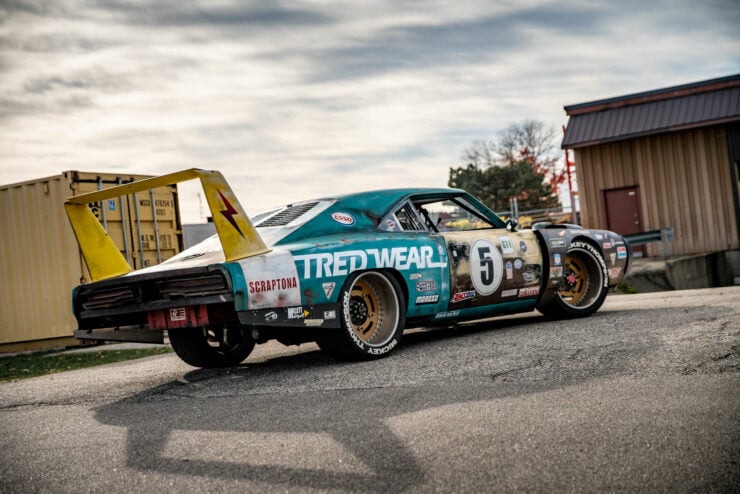

Building The Dodge Charger Scraptona
The team at TredWear built a custom tubular chassis and fitted it with off-the-shelf components, such as Wilwood brakes and a Winters dirt track-ready quick-change rear end. A 358 cubic inch Dodge R5-P7 V-8 NASCAR engine complete with a dry sump oil system, Holley XP750 carb, carbon airbox, and an 11.5:1 compression ratio was fitted.
This race-ready engine gives 740 hp with a rev limit of 8300 rpm, running on 100+ octane gasoline. A Tilton NASCAR bell housing and a Tremec five-speed manual gearbox completes the drivetrain.
To give the car the right stance, 20 inch custom wheels are fitted, wearing Mickey Thompson tires.
But it is the body that is the crowning glory of the Scraptona. It is just wonderfully, well, ‘used’ is probably the right word. The paint job, what there is, is hand applied using a roller and some panels remain unpainted, such as the front fenders. The doors are mismatched and the tall wing is yellow, while the reproduction nose cone has been left in its natural black.
The overall effect is of a barn find Daytona but this one will run and drive as it should, with properly sorted mechanicals and running gear. It’s just got so much character and, best of all, it could be yours for $149,000, which is a fraction of what an original Charger Daytona would cost you.
If you’d like to see the car or enquire about buying it you can visit the listing here on Garage Kept Motors.
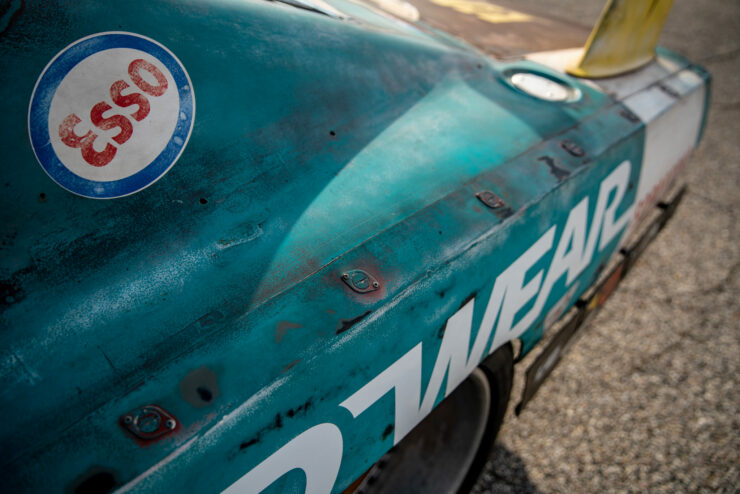
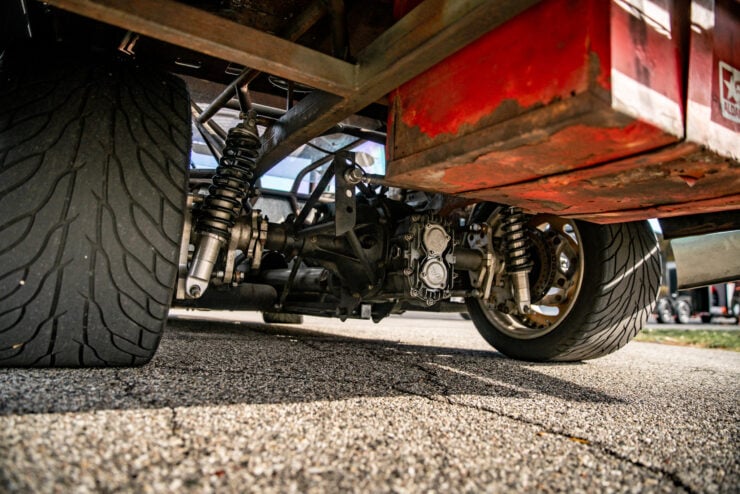
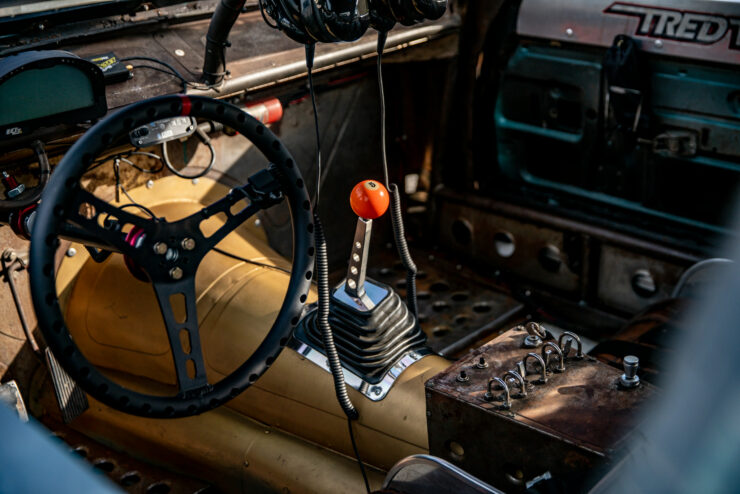
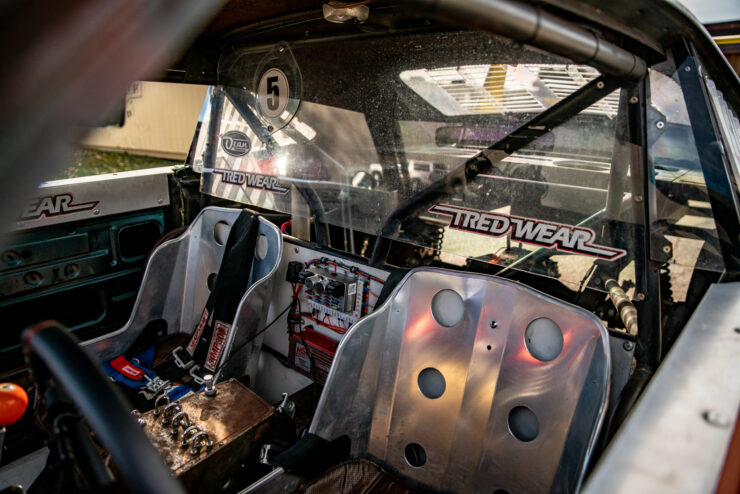
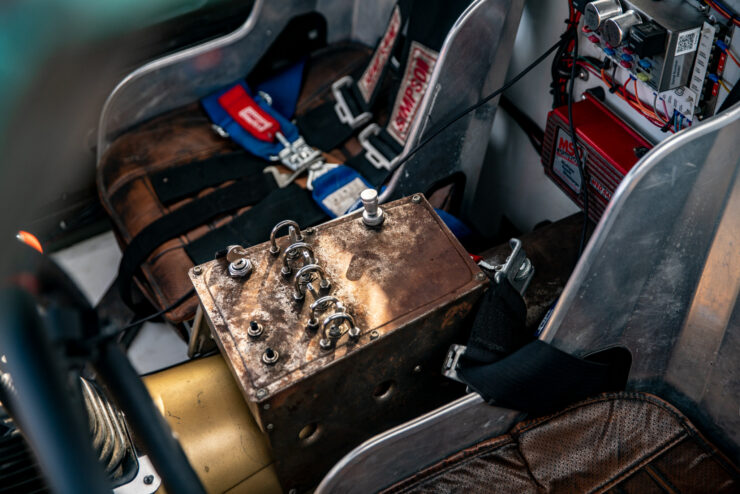
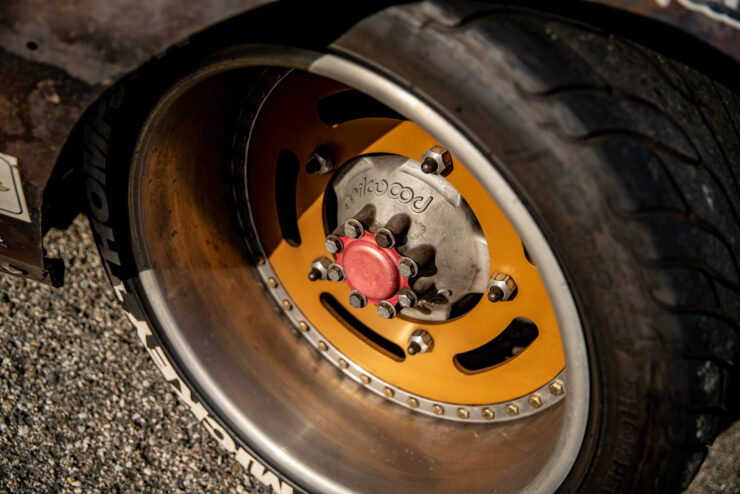
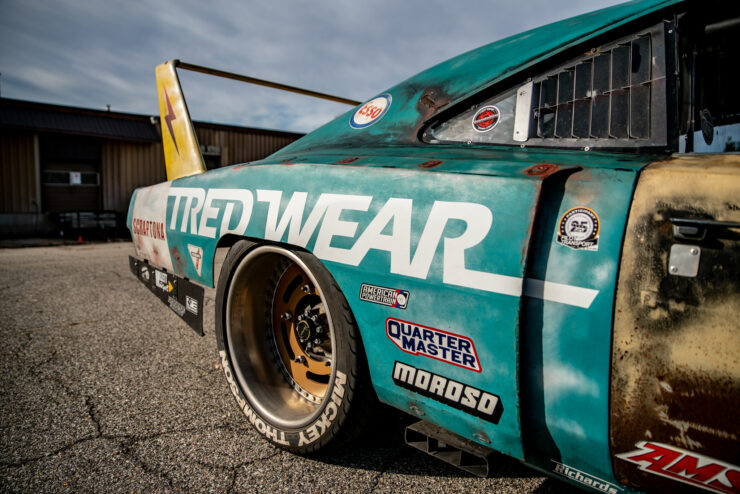
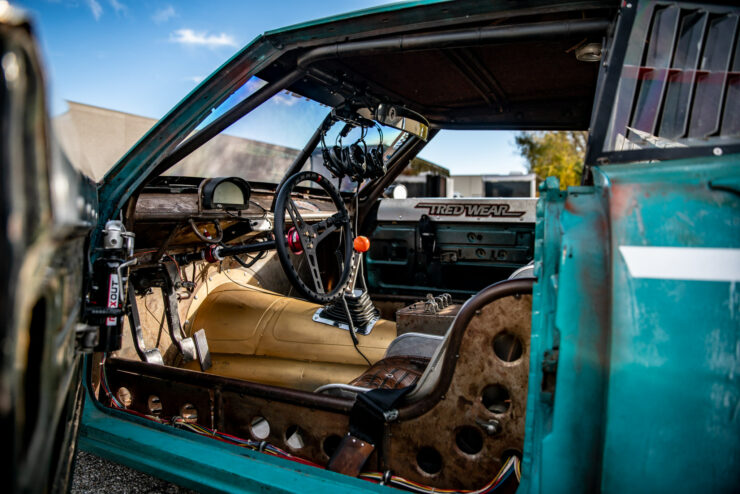
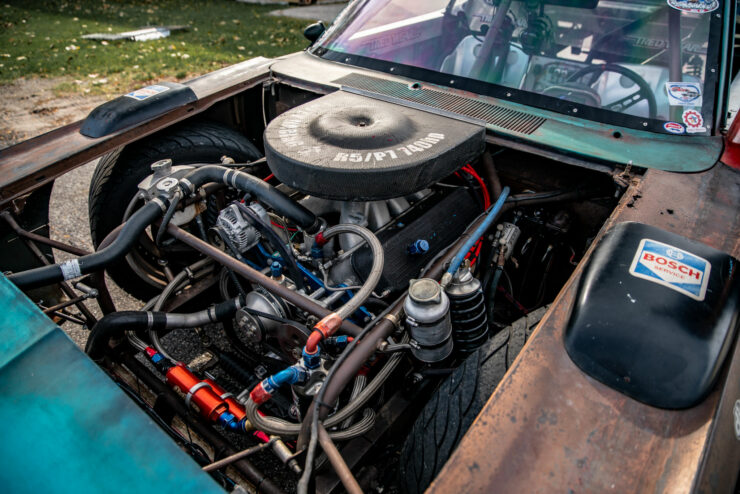
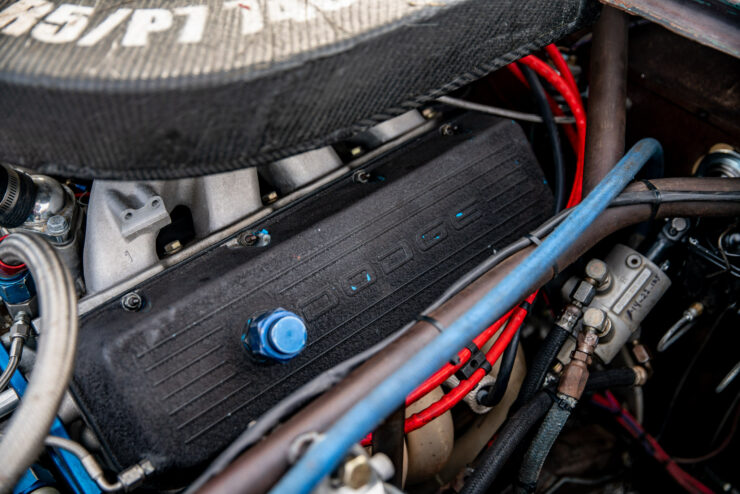
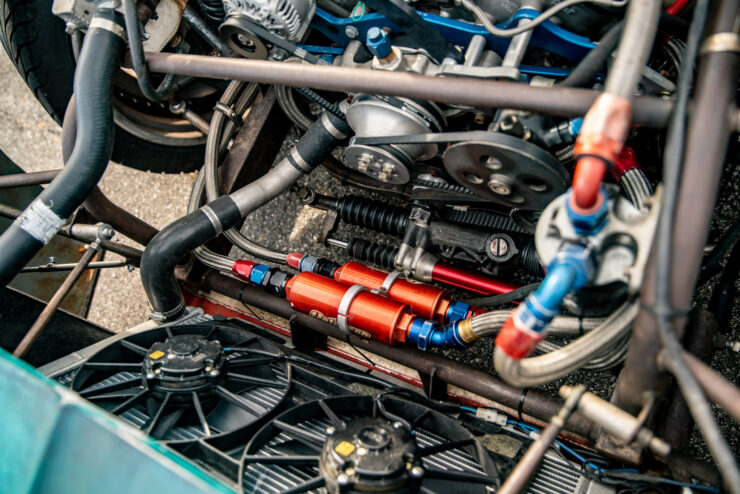
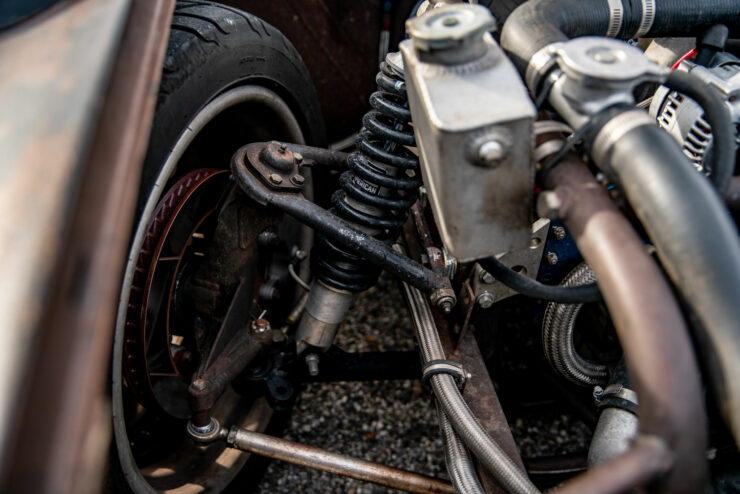
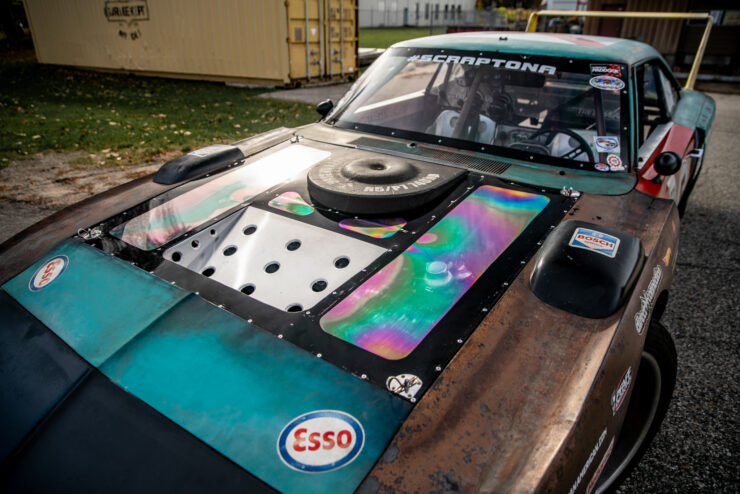
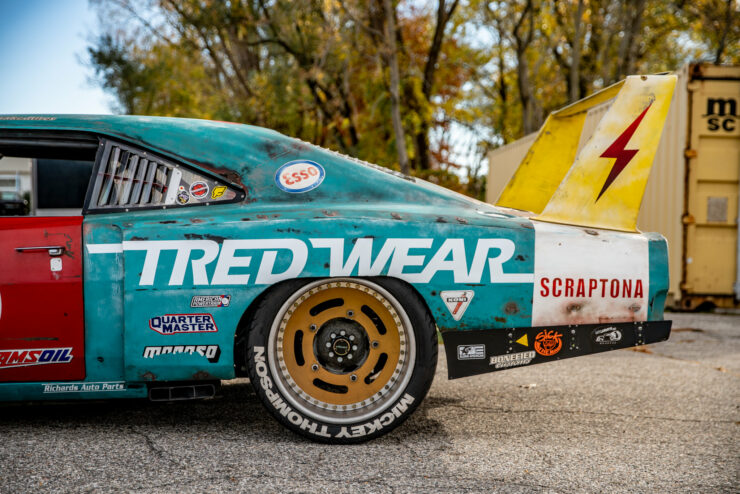
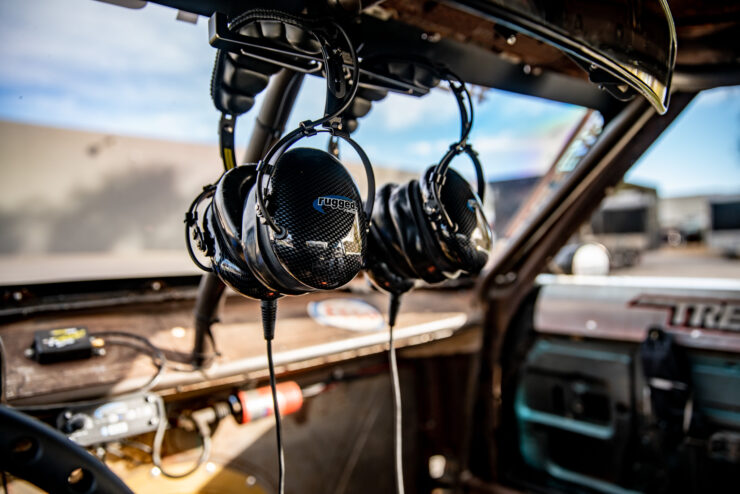
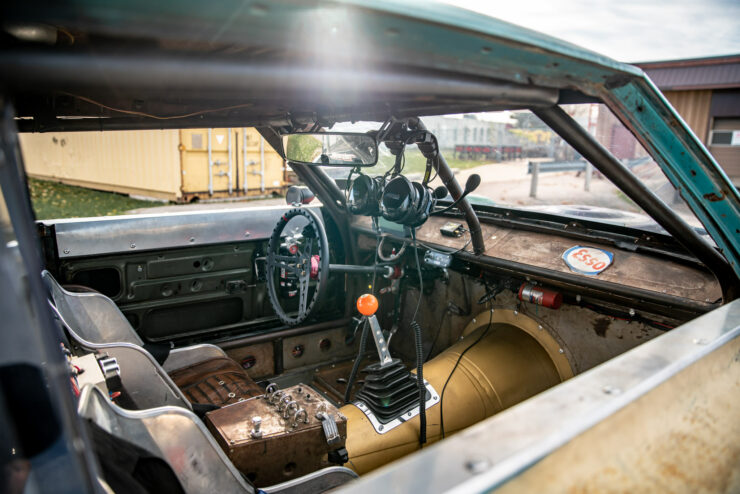
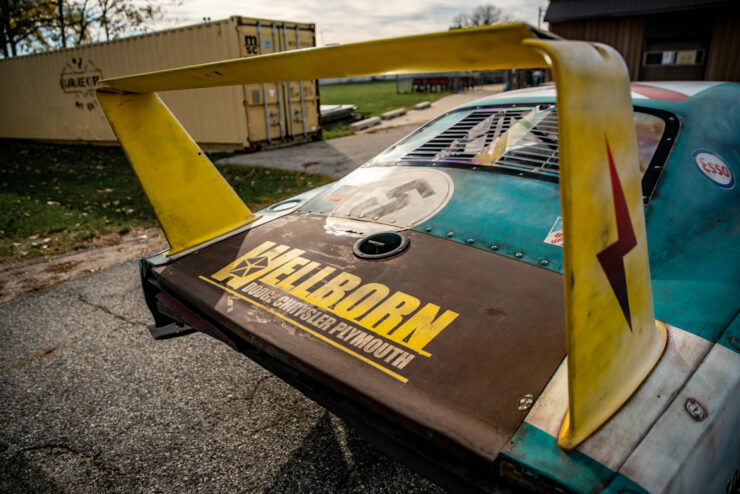
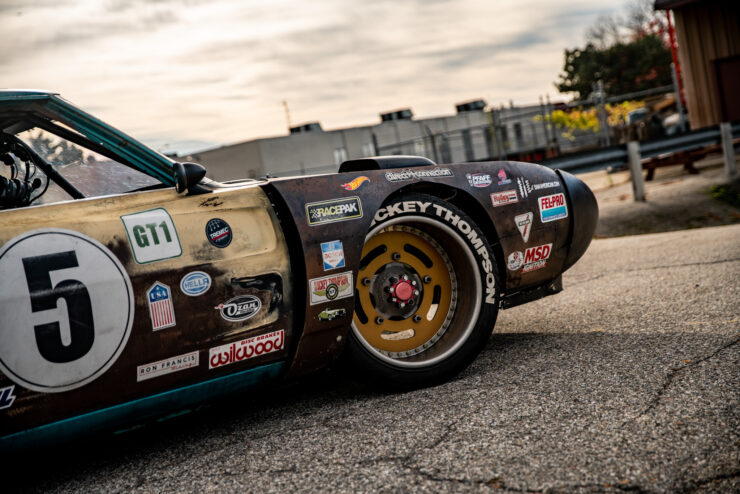
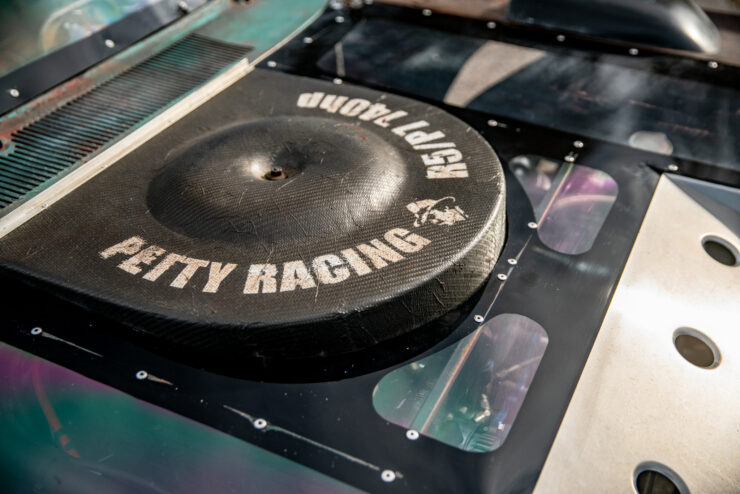
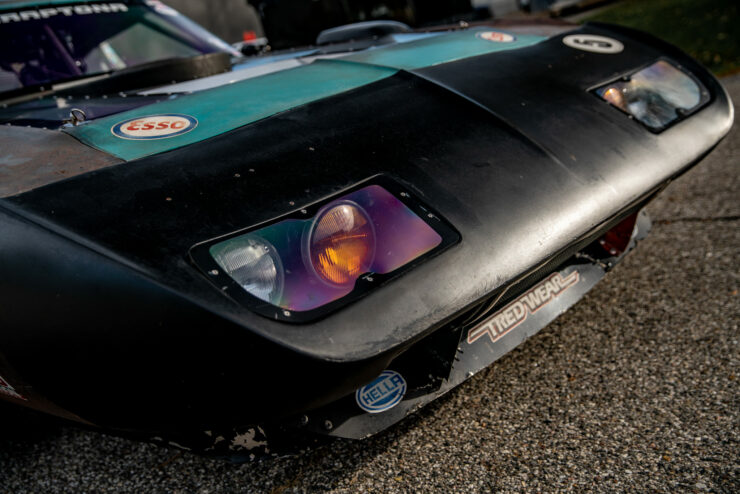
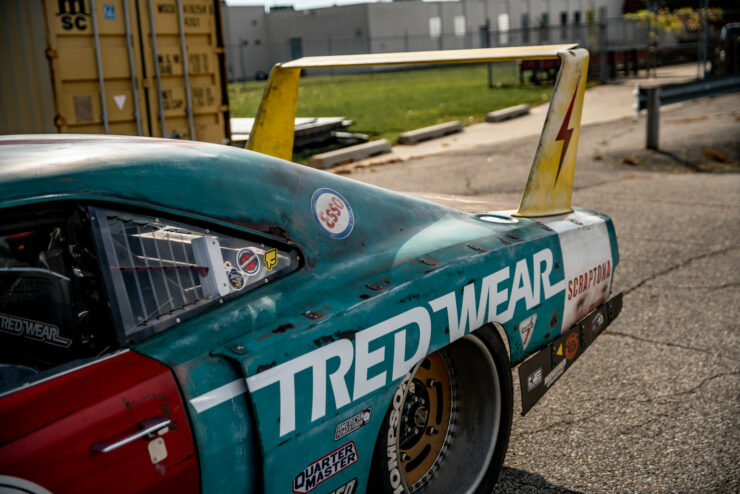
Images courtesy of Garage Kept Motors

